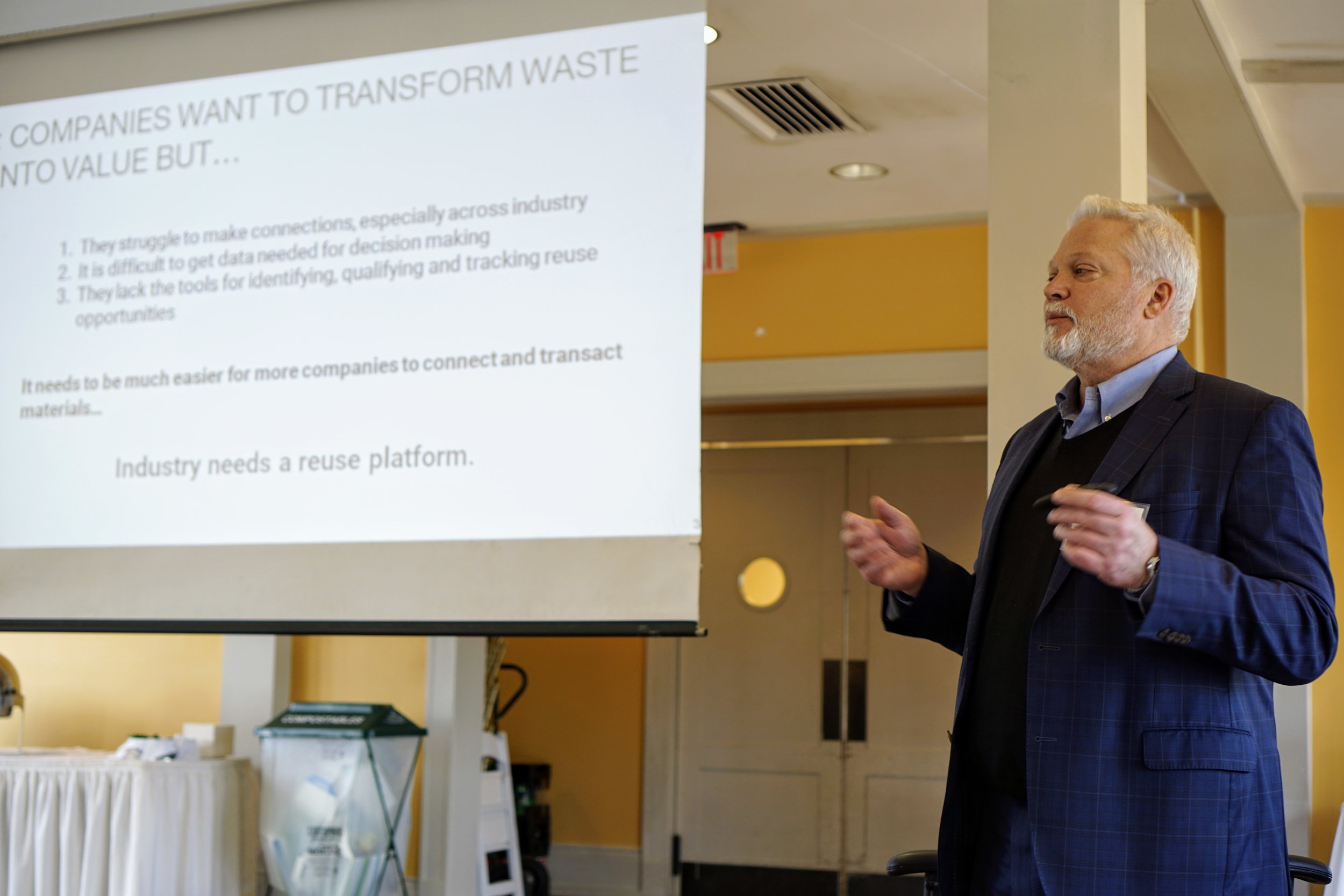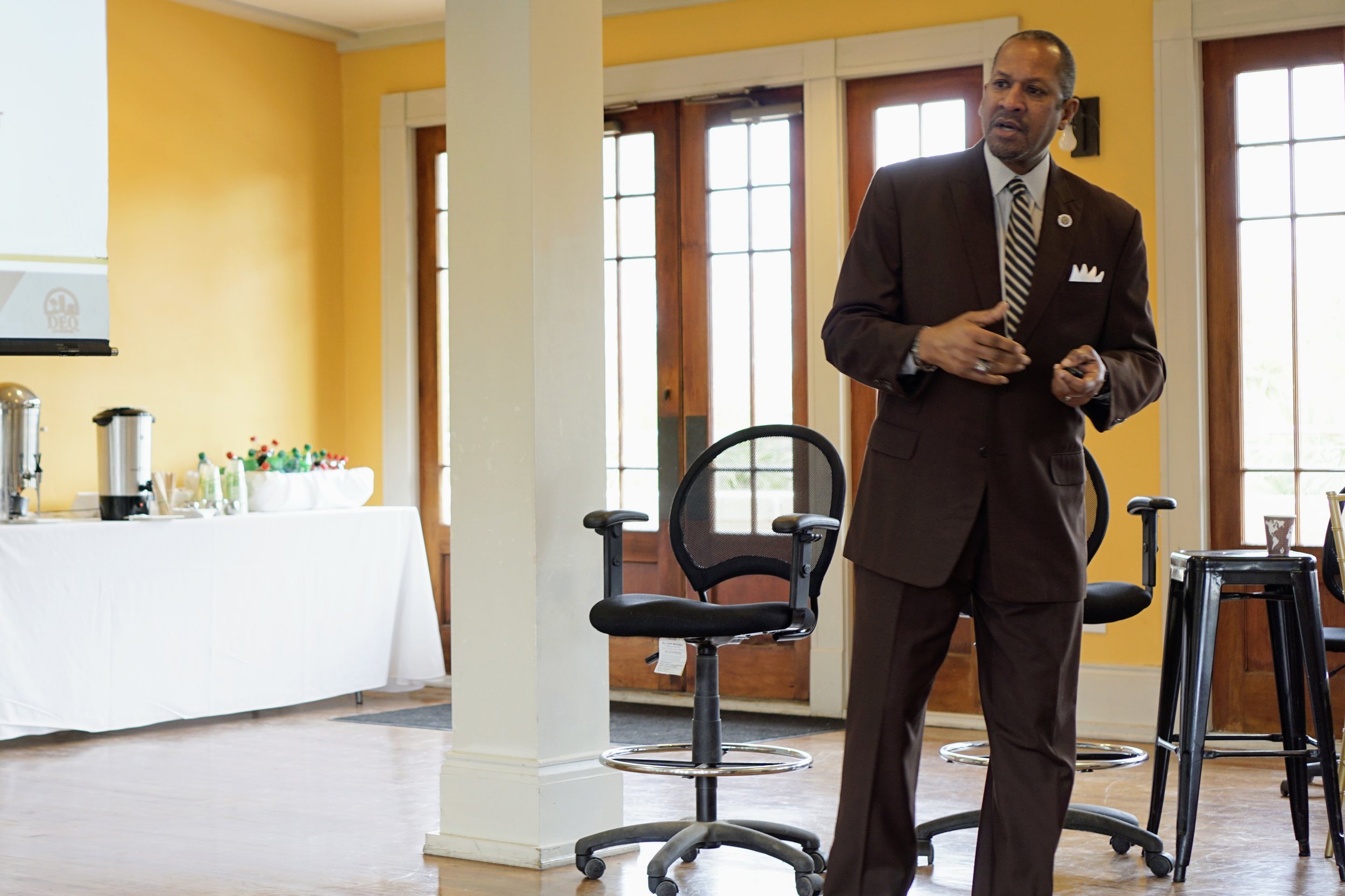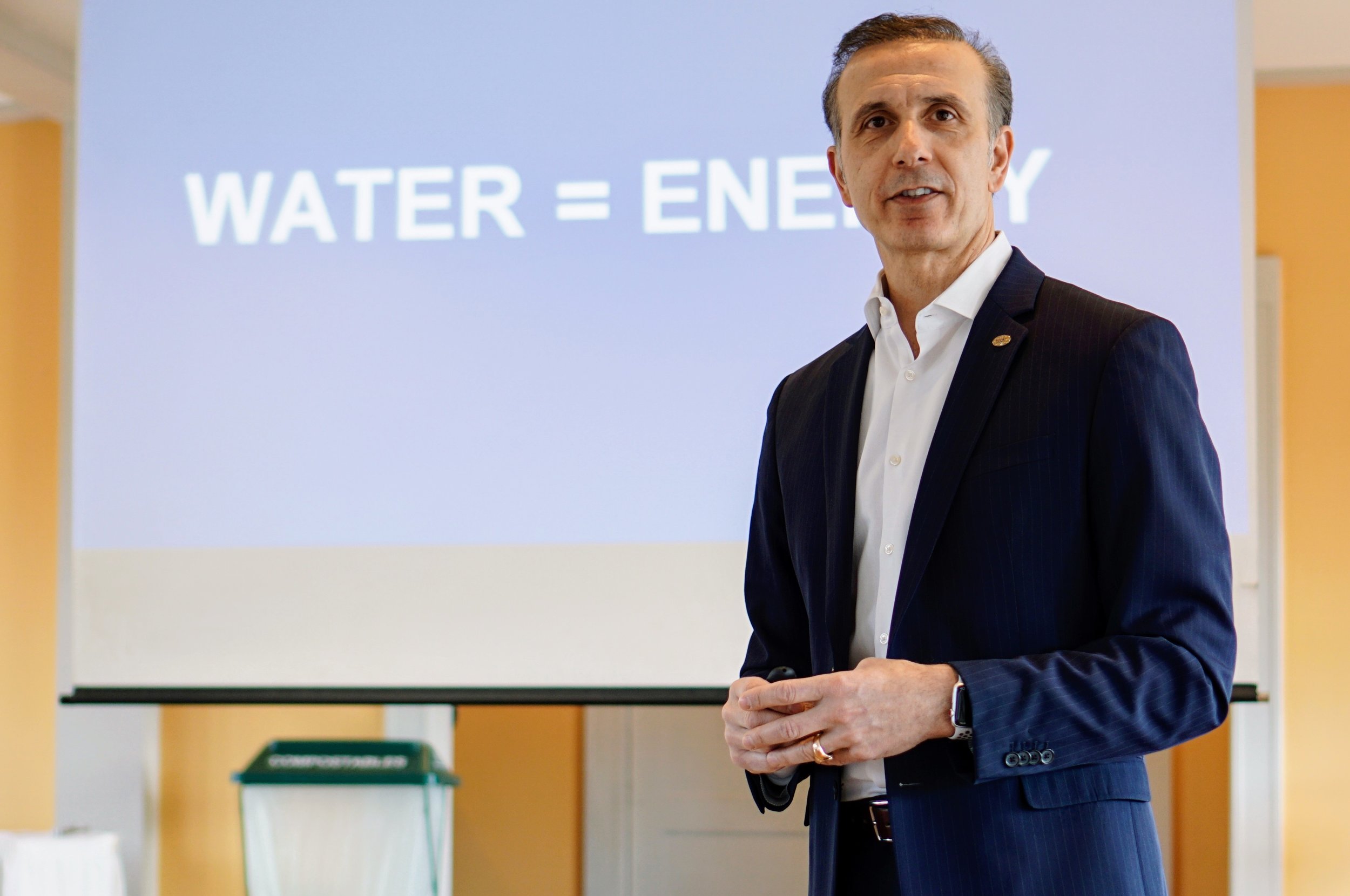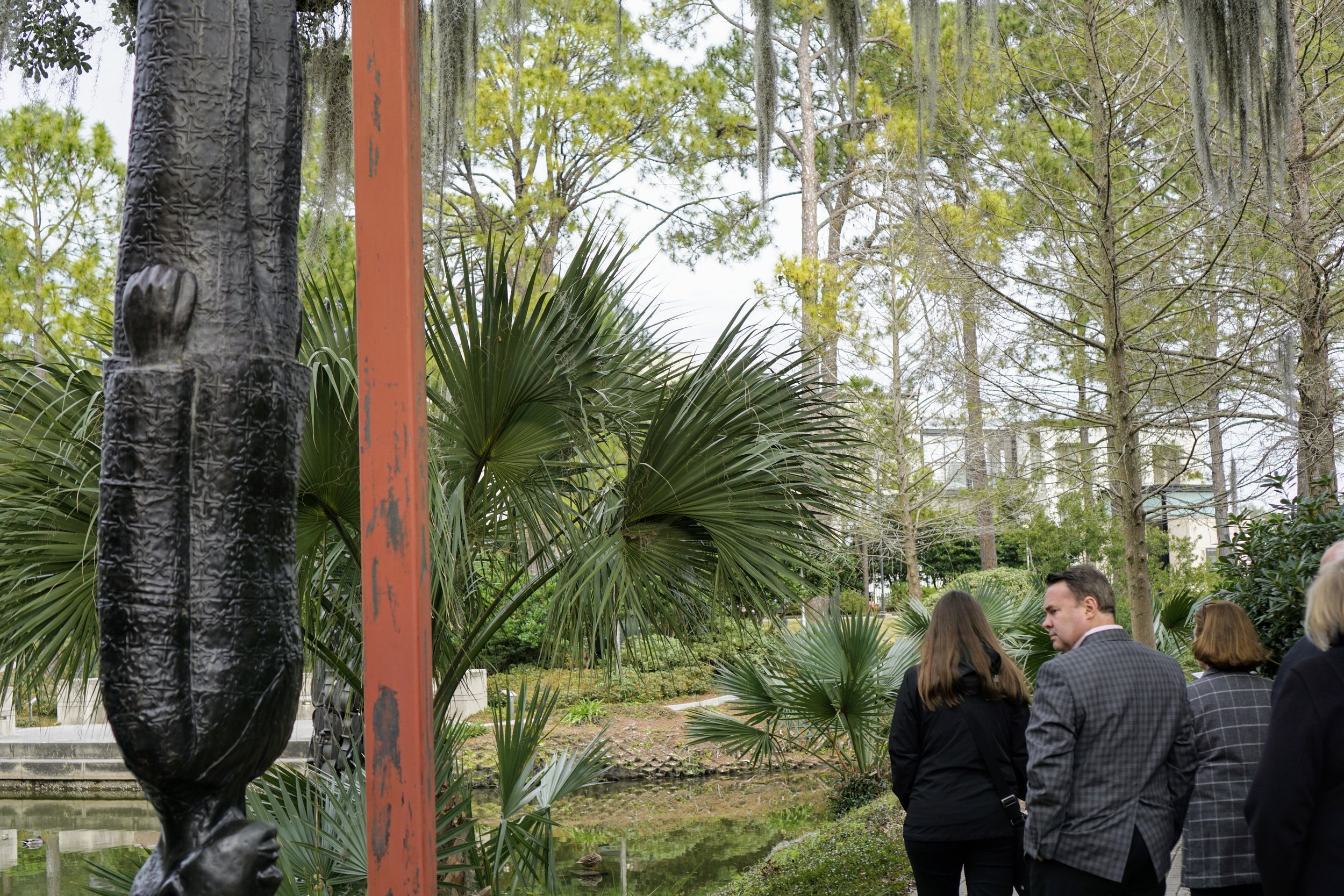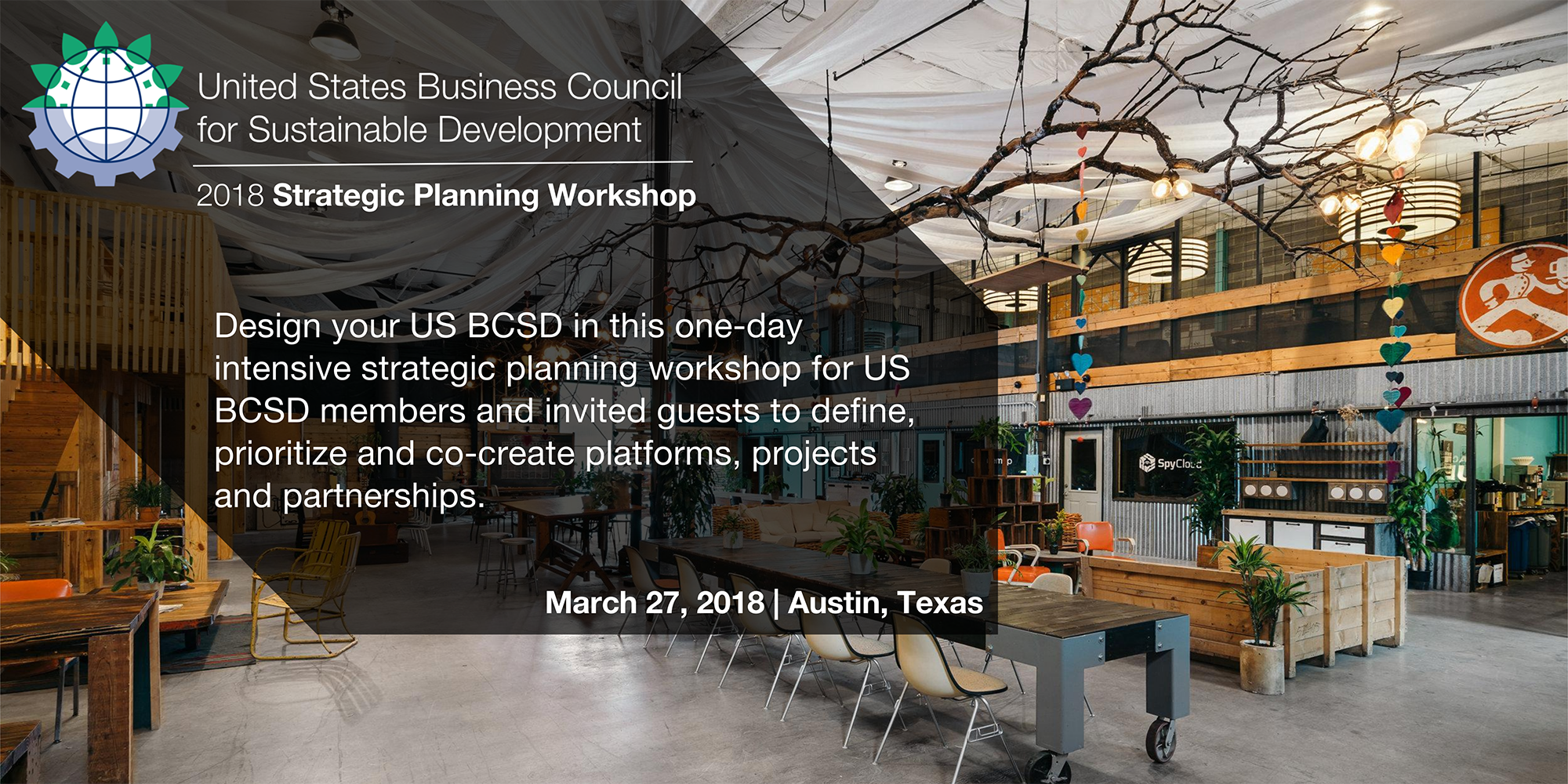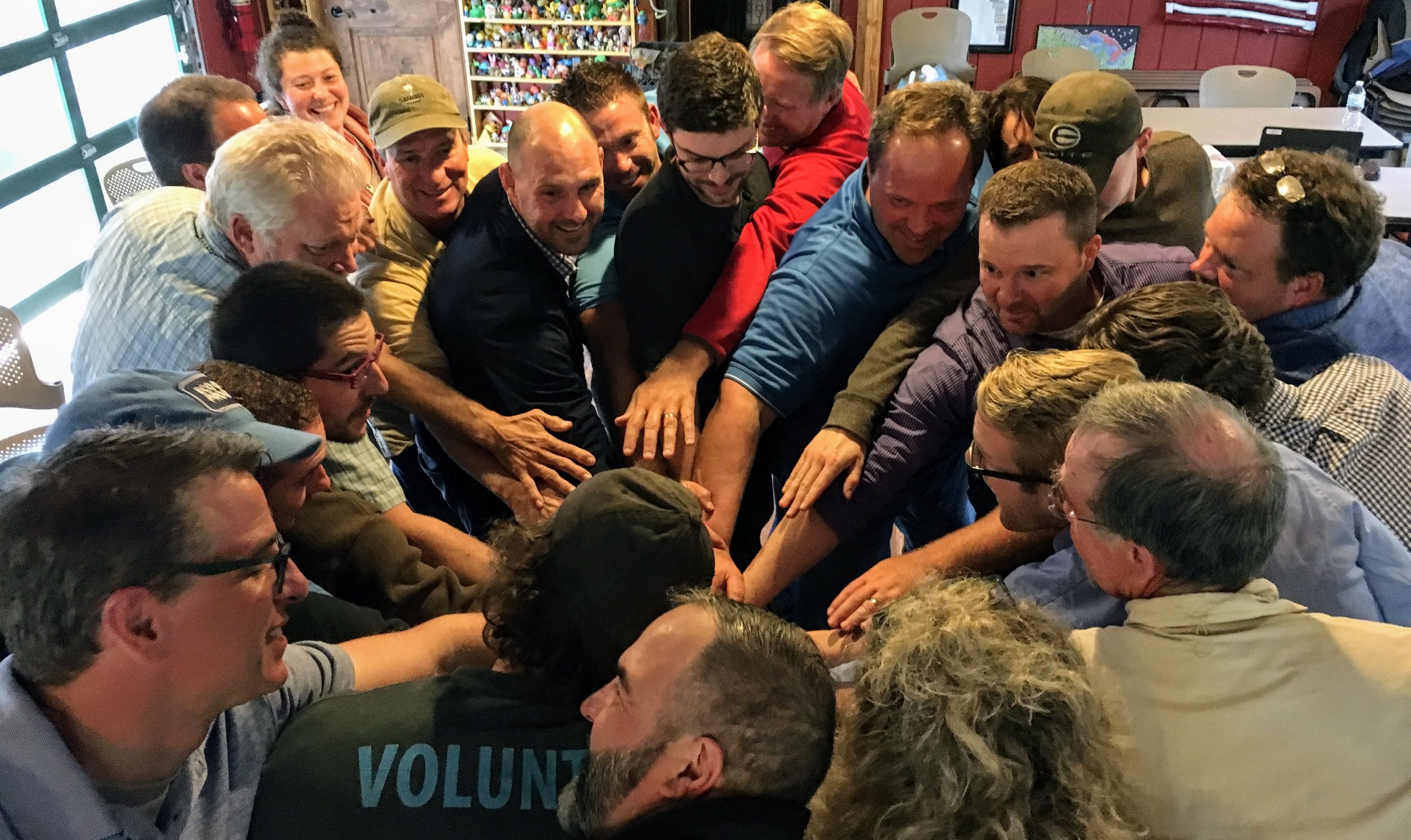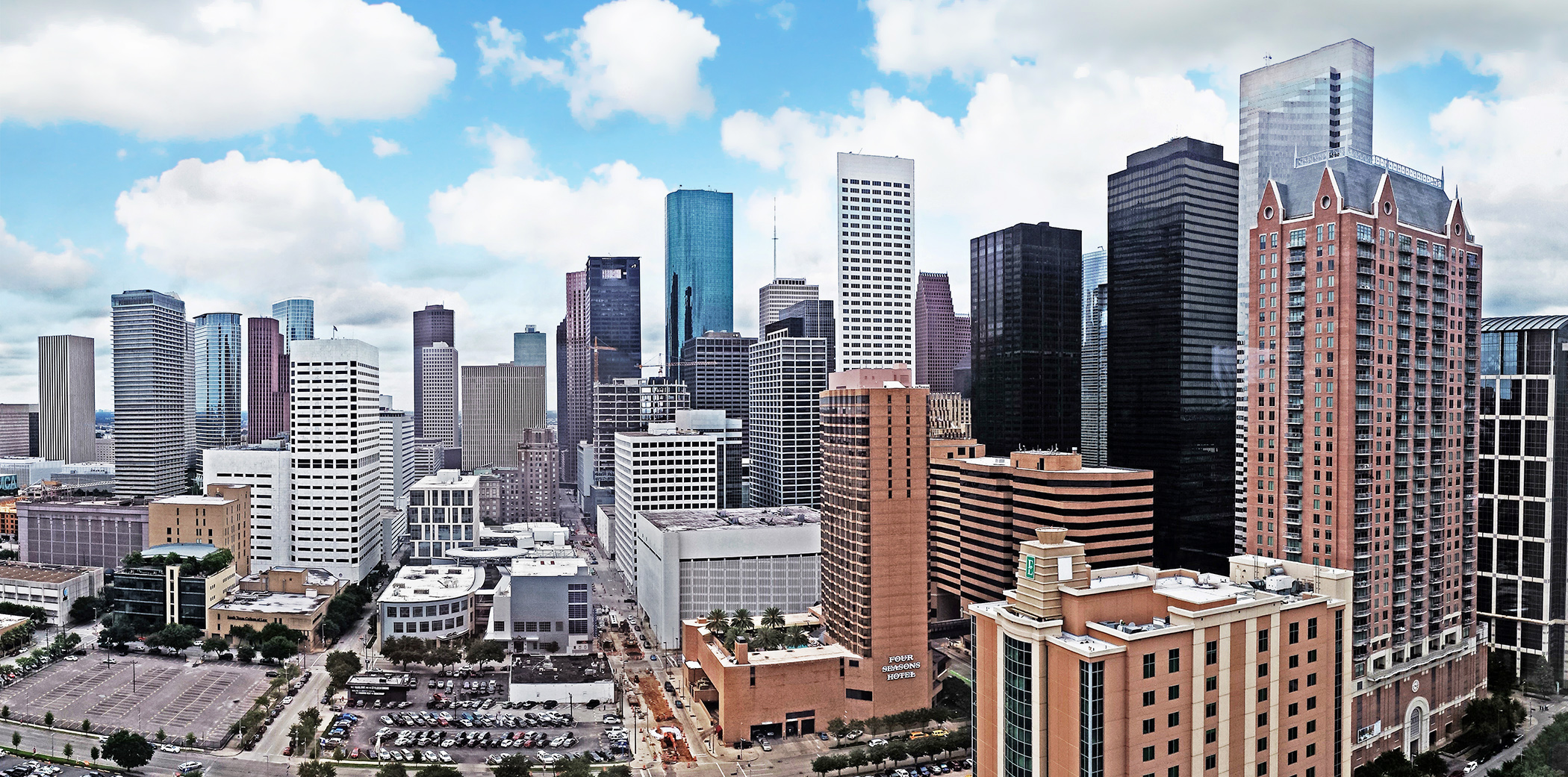Members of the US BCSD and leading companies - including Dow, Schlumberger, and Ingersoll Rand - and organizations from around the US gathered in New Orleans, LA at the end of January 2019 for our first National Meeting of the year.
Meeting attendees discussed a range of water, circular economy, cities, and ecosystems challenges; and identified actionable opportunities to work together in existing or emerging US BCSD projects. A high-level summary of outcomes can be found below. For questions or to get involved with our work, email us at info@usbcsd.org.
Water
Objectives
Awareness of the risks associated with water-related issues is coming to the forefront of industry planning and operations. Understanding and addressing risks and opportunities helps organizations navigate water quality, quantity and stormwater issues at both site-specific and watershed scales. This session presented examples from the US BCSD Louisiana Water Synergy Project of how companies and partners are dealing with water issues through collaboration and regional scale solutions.
Key Takeaways
Port Fourchon - Ninety percent of all Gulf of Mexico deepwater petroleum output for the entire United States flows through this small port at the southern tip of Louisiana. And Port Fourchon is rapidly disappearing into the Gulf of Mexico. A collaborative project between the Port Authority and industrial tenants to make beneficial use of dredge material from deepening the shipways is in development. The goal is to use material to maintain and restore lost land for long-term coastal protection and habitat creation.
Simone Maloz of Restore or Retreat described the role of participants and the nature of the project, highlighting the importance of collaboration among the private-public partnership between tenant companies and the port authority. Justin Ehrenwerth of The Water Institute of the Gulf further discussed the nature of the project, and reiterated the importance of metrics and using sound science.
Water Quality Trading - In 2017, project participants partnered with environmental, agricultural, and coastal protection agencies to design a framework and develop guidance for a Water Quality Trading Program for Louisiana. This public/private program is aimed at facilitating trades between industrial and municipal point sources with agricultural and other types of non-point sources. The Louisiana DEQ is working with the US BCSD Louisiana Water Synergy Project to develop practical common sense program rules by the end of 2019. The goal is to demonstrate how voluntary, market-based solutions can successfully improve water quality in Louisiana, the Mississippi River, and ultimately the Gulf of Mexico at a lower cost and more efficiently than traditional regulatory approaches.
Tierra Resources - Sarah Mack, president of Tierra Resources, described the Luling wetlands project which, in partnership with Entergy, will generate carbon offsets and nutrient pollution reductions which could become tradable credits. George Kelly of RES gave an overview of different types of trading projects under development or in place in other states.
Cities
Objectives
This session sought to explore how to more effectively connect regional business capabilities and interests with the big city challenges; issues like resiliency, data collection and organization, energy efficiency, mobility and others. It also set out to explore what partnerships (organization and program partnerships) the US BCSD should be prioritizing to support its emerging cities platform.
Key Takeaways
The Greater New Orleans Foundation provided an overview of its work to create a vibrant, sustainable and just Greater New Orleans region, highlighting work with partners at the City of New Orleans, New Orleans Business Alliance, Louisiana Coastal Exchange and others. They described efforts under way to work more closely with construction and real estate industry associations, and to promote “sustainable tourism”.
Speakers from the City of New Orleans and Life City stressed the need for holistic, big picture thinking to solve city-sustainability-resiliency challenges; and the opportunity for an “expert idea exchange” between cities to share ideas and best practices.
And City Park, our host, presented a number of sustainability projects that improve resiliency and address stormwater challenges in the local community.
Circular Economy
Objectives
The US BCSD is the leading facilitator for business-to-business material reuse in the US, helping develop and scale new reuse and recycling market opportunities. Updates included a new multi-state approach to building and developing new Materials Marketplace programs, a case study showed how Shell had joined with the US BCSD, its Marketplace partner Pathway21, and a Louisiana coastal resiliency company, Martin Ecosystems, to show how used water bottles from the New Orleans Jazz Fest were converted through eight stages into coastal barriers supporting seagrass growth on the Louisiana coast.
Key Takeaways
The Materials Marketplace continues provide an actionable path for companies, regions and organizations to engage in the circular economy. Tennessee, Michigan, and Ohio are leading the way with state government supported efforts and over 2,000 companies are engaged today.
Storytelling value can be just as important as environmental and economic benefits. Meeting attendees were fascinated learning each of the steps involved to turn PET bottles into floating islands for seagrass beds. Stories like this should increase consumer participation in recycling and reuse.
Ecosystems
Objectives
Ecosystem services are becoming an integral part of infrastructure solutions. Nature based solutions can offer lower cost, highly reliable approaches to dealing with issues such as stormwater management, flooding mitigation, water quality and quantity issues, and carbon sequestration. Industry is collaborating with key partners to identify, quantify, and in some cases monetize, ecosystem services in order to make a more compelling business case.
Key Takeaways
Overall, this session stressed the importance of recognizing the value of leveraging natural systems, ecosystem services and green infrastructure.
Restore the Earth Foundation described their Point aux Chenes restoration project and the numerous environmental, economic, and social co-benefits created. The business council has a strategic alliance with Restore the Earth Foundation to apply a business-led model to landscape scale restoration. Various parties are working jointly to implement a 4,000-acre coastal restoration project at the Point-aux-Chenes Wildlife Management area, southeast of Houma, Louisiana. REF also shared insight into their EcoMetrics methodology that quantifies and monetizes the co-benefits using location-based data and stakeholder inputs.
Dow presented the Nature Goal Initiative that drives their determination of how and when to use natural solutions to address operational needs such as water treatment and stormwater management.
Other Initiatives Discussed
Alliance for Sustainable Progress - Andy Mangan, US BCSD, presented a business/academic/government alliance concept to the US BCSD member companies for feedback. Responses were neutral on the idea. Concerns included lack of focus on specific goals, like water or the built environment. Some questioned the need for another organization, though the reasoning for accelerated action on SD goals was not disputed. Several were concerned about the academic side as presented, saying that by choosing one university to work with it initially it would be hard to get others on board. Overall, they were understanding of the concept but said it needed more work.
Great Lakes Sustainability Initiative - The Council of Great Lakes Industries has conducted a project to assess the state of sustainability efforts underway by companies in the Great Lakes region and to propose recommendations for building on these efforts. CGLI is not positioned to lead the next stage of this project, which includes establishing collaboration among industry and key stakeholders to define and take action on the challenges identified in the initial analysis. US BCSD is in discussion with CGLI on establishing a collaboration platform model, similar to the Louisiana Water Synergy Project, to engage companies and move forward on the recommended actions.
10 Across - the US BCSD will attend this year's 10X Summit in Arizona which explores economic, environmental, and social challenges and opportunities for communities along the I-10 corridor. As Houston, Baton Rouge, and New Orleans all lie along I-10, there is potential collaboration opportunities for US BCSD.
US Chamber of Commerce Foundation Corporate Citizenship Center - the US BCSD has been in exploratory discussions with the CCC to explore collaborative opportunities. This group is mainly industry, and there is membership overlap. This group does not get into projects and therefore working with US BCSD would be a good partner.
Alliance for Water Stewardship Standard - the AWS standard certifies sites based on their commitment and performance on site and watershed water stewardship efforts. Ecolab's Garyville, Louisiana site is pursuing certification. This site is an active member of the LWSP. AWS is also partnering with Restore the Earth Foundation to leverage the EcoMetrics model as a method to address quantification and monetization of benefits requirements in the standard. A crosswalk between the AWS requirements and EcoMetrics is available.


